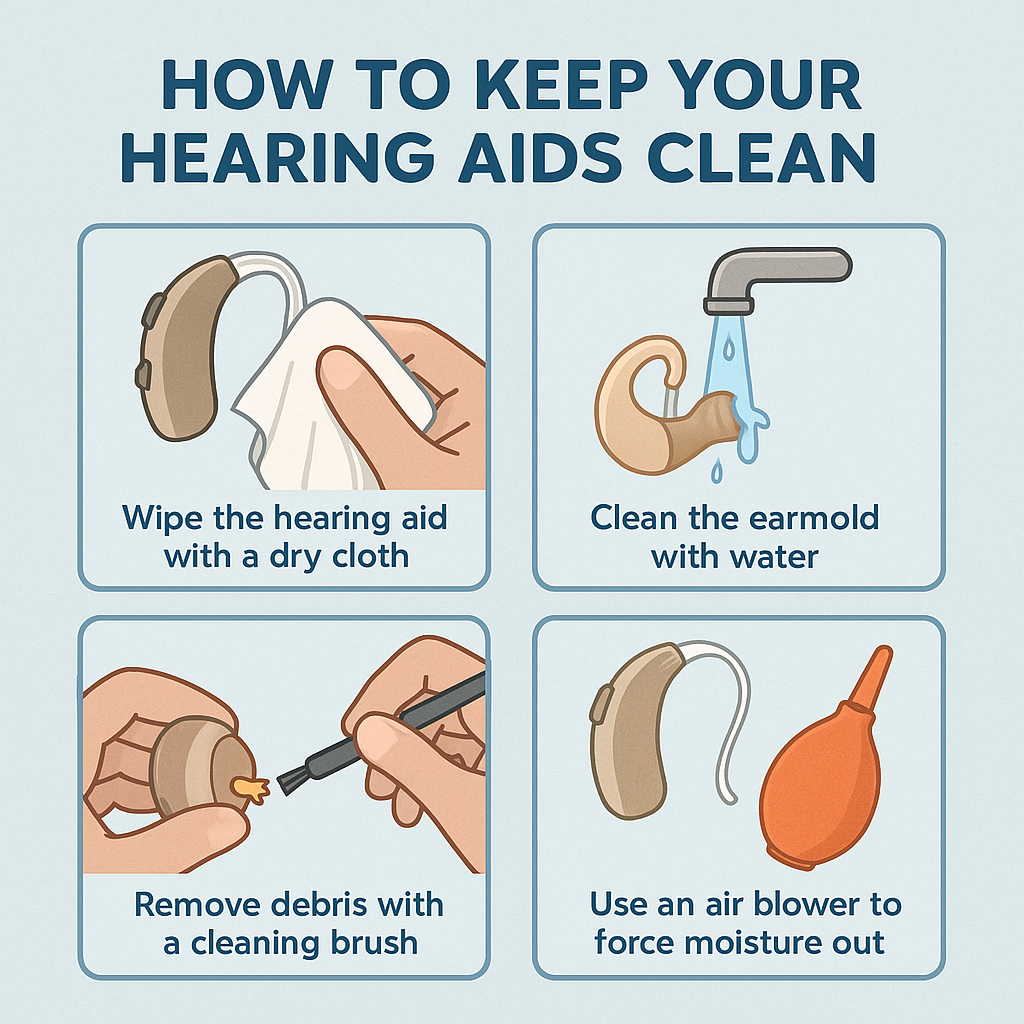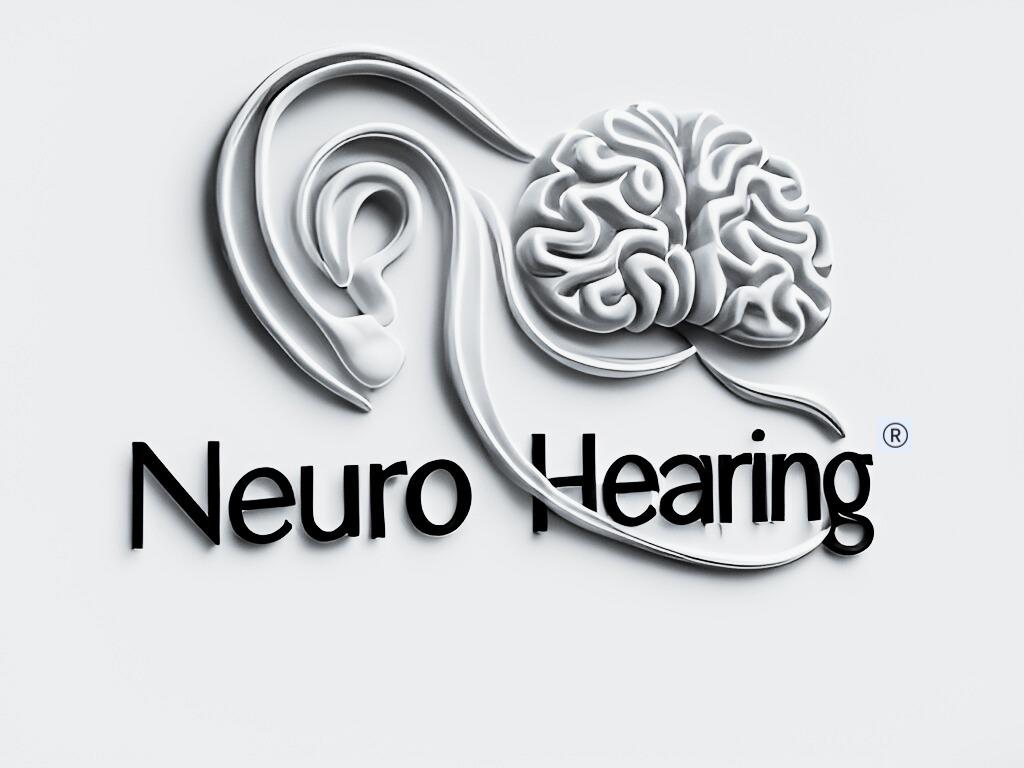How to Keep Your Hearing Aids in Top Condition
Hearing aids are life-changing devices that reconnect you with the sounds and conversations you love. But just like any advanced piece of technology, they require regular care and maintenance to stay in top condition.
Whether you’re new to hearing aids or have been wearing them for years, proper upkeep ensures better performance, improved comfort, and a longer device lifespan. In this post, we’ll walk you through essential care tips, maintenance routines, and expert advice on how to keep your hearing aids working at their best.

Why Hearing Aid Maintenance Matters
Hearing aids are small, sensitive devices that are constantly exposed to moisture, earwax, oils, dust, and environmental elements. If not cleaned or cared for regularly, buildup can block microphones or receivers, causing poor sound quality or even complete failure.
By following a consistent care routine, you’ll enjoy:
Clearer sound and speech quality
Fewer repairs and service visits
Extended device lifespan
Improved hygiene and ear health
1. Clean Your Hearing Aids Daily
Cleaning your hearing aids is quick and easy, and it makes a big difference in performance.
Daily Cleaning Checklist:
Wipe down the device: Use a soft, dry cloth or specialized cleaning wipe to remove moisture, oils, and dirt.
Remove earwax: Gently clear wax from microphone and receiver openings using a soft brush or wax pick.
Open the battery door: If you use disposable batteries, open the door at night to let moisture escape and extend battery life.
⚠️ Never use water, alcohol, or cleaning chemicals on your hearing aids—they can cause irreversible damage.
2. Use a Hearing Aid Dryer or Dehumidifier
Moisture is one of the most common causes of hearing aid malfunctions. Sweat, humidity, or even accidental splashes can compromise internal components.
Recommended:
Use a hearing aid dehumidifier overnight. These small drying containers remove moisture and help prevent corrosion.
Electronic dryers are also available and provide added protection with UV sanitation.
This simple habit can significantly increase the lifespan of your devices, especially in hot or humid environments.
3. Replace Wax Guards and Domes Regularly
If your hearing aid uses wax guards or domes, these components should be replaced as needed—typically every 1–2 weeks, or when they become discolored or clogged.
Signs it’s time to replace:
Muffled or weak sound
Visible wax blockage
Device feedback or whistling
Most modern hearing aids come with user-friendly replacement kits. If you’re unsure how to replace them, your audiologist can walk you through the steps or do it for you during your next check-up.
4. Handle with Care
Although they’re durable, hearing aids are still delicate devices.
Best Practices:
Insert and remove over a soft surface (like a bed or towel) in case they fall.
Avoid contact with hair sprays, perfumes, and makeup, which can clog vents or coat microphones.
Store in a dry, safe place when not in use—ideally in their original case or a dehumidifier.
5. Change Batteries or Charge Correctly
Battery issues are one of the most common hearing aid complaints—and they’re often preventable.
For disposable batteries:
Store them in a cool, dry place.
Change them when sound becomes distorted or intermittent.
Always keep spare batteries on hand.
For rechargeable models:
Use the manufacturer-approved charger.
Charge devices overnight for a full day’s use.
Avoid overcharging or exposing to heat.
If your battery life seems to be shortening, let your audiologist know—it could signal a deeper issue.
6. Schedule Regular Check-Ups
Even if your hearing aids seem to be working fine, regular check-ups with your hearing care provider are essential.
During these visits, your audiologist can:
Deep clean and inspect the devices
Update or fine-tune sound settings
Replace worn components
Check for changes in your hearing
It’s a good idea to schedule professional cleanings at least twice a year—or more often if you wear your hearing aids all day, every day.
7. Know When to Call a Professional
If you notice any of the following issues, don’t try to fix them yourself—book a repair or service appointment:
Total sound loss
Persistent feedback or whistling
Broken casing or tubing
Battery draining unusually fast
Moisture inside the device
Trying to fix sensitive electronics yourself can void warranties or cause further damage. Let the professionals handle it.
Bonus Tips for Long-Term Hearing Aid Health
Wash your hands before touching your hearing aids.
Keep ears clean to prevent excess wax buildup.
Label your hearing aids if you wear two different models for each ear.
Avoid extreme temperatures. Never leave hearing aids in a hot car or near heaters.
Get the right accessories like retention clips, wind guards, or wax filters if you’re active or work outdoors.
